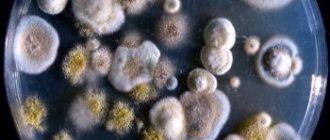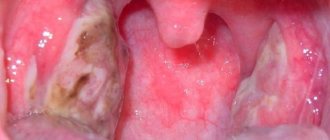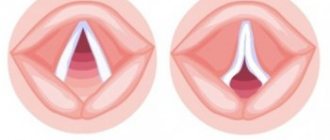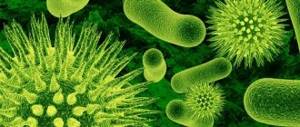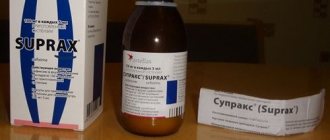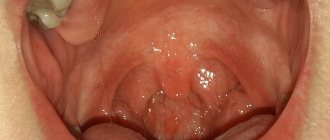Author's rating
Author of the article
Shutofedova Ksenia Yurievna
General practitioner
Articles written
578
about the author
Fungal pharyngitis is an inflammatory disease of the pharynx. It develops as a result of the active reproduction of yeast-like harmful fungi from the Candida family. All pathologies provoked by this type of fungus are usually called mycoses, for this reason pharyngitis has a second name - pharyngomycosis of the pharynx.
Main causes and provoking factors
In almost all cases (90%), pharyngomycosis, the main development factor is Candida fungi. In the remaining 10%, fungal pharyngitis is caused by infection of the pharynx by mold microorganisms. The disease is quite widespread.
The main role in the occurrence of pharynx pathology is played by a violation of the body's protective functions (weakened immune system). The disease is a common occurrence in people suffering from immunodeficiency or endocrine system dysfunction.
Fungal pharyngitis appears in the following situations:
- Development of an allergic reaction.
- Lesions of the pharyngeal mucosa.
- Fungal, viral or bacterial diseases.
- Ingestion of stomach contents.
In addition, there are a number of situations that can significantly increase the risk of infection:
- Pathologies of the gastrointestinal tract.
- Poisoning with various chemicals.
- Regular hypothermia of the body.
- Long-term use of antibacterial agents.
Important! An equally important provoking factor is: malicious use of tobacco.
The main causes and provoking factors of the disease.
What kind of disease is this?
Like most other forms of pharyngitis, its candidal variety is also characterized by extensive inflammation of the larynx, but still has a number of features. First of all, this disease is capable of remaining in a latent state for a long period of time, gradually increasing its population size, weakening the protective function of the immune system. In this case, the symptoms appear very vaguely and most patients do not even suspect that a strain of fungal infection that is resistant to most medications is developing in their throat.
Candidal pharyngitis in most cases affects children whose age ranges from 1 to 10 years. During this period, their immune system is most vulnerable and is not always able to resist fungal microorganisms. To newborns and infants, the disease is transmitted from a mother who suffered from a chronic form of thrush during pregnancy, or acted as a carrier of an infectious pathogen.
Adults extremely rarely encounter fungal pharyngitis for the reason that the immunity of patients in the older age group is stronger and in 93% of cases copes with a foreign biological agent at the stage of penetration of fungal spores into the oral cavity along with the air flow or while eating with dirty hands .
This disease is not classified as particularly dangerous, which in a matter of hours or days can provoke serious consequences and complications in the patient, or cause disability or death. The slow course of the disease allows the patient to timely notice the pathological process in the throat area and begin drug treatment aimed at destroying not only viable microorganisms, but also their spores, which have the ability to spread throughout the human body.
Symptoms of the disease
Fungal pharyngitis has typical symptoms. And when it appears, you can immediately determine that it is candidal pharyngitis and seek help from a doctor.
In adults
The most common manifestations of fungal pharyngitis are:
- The larynx begins to hurt.
- The patient has a sore throat.
- The pharynx with pharyngitis has a pronounced red color.
- A cough occurs.
In the acute form of the pathology, the patient’s general condition sharply worsens. Often a person may experience: weakness, high body temperature, runny nose.
Chronic candidal pharyngitis is quite difficult to treat and requires a lot of patience. With this form of development, a person develops a constant sore throat and often develops a predominantly dry cough. With treatment, all signs and other symptoms disappear almost immediately. But achieving complete healing is not easy. Chronic fungal pharyngitis is the result of frequent insomnia and nervousness.
Often the chronic form of the disease is not an independent pathology, that is, it becomes a clear sign of a disorder of the digestive system, so patients often complain of pain in the stomach area.
In children
Exacerbation of the acute form of candidal pharyngitis proceeds in the same way as in adults. But diagnosing the development of the disease in infants is quite problematic. He begins to be capricious, sleeps and eats poorly. In older children, a white coating may appear on the tongue; this is a specific sign of the disease. Fungal pharyngitis in children has all the signs of a sore throat or a cold.
In childhood, the disease often transforms into nasopharyngitis. This is explained by the peculiarities of the baby’s anatomical structure. As a result, a runny nose appears.
In addition, children may develop a reflex dry paroxysmal cough due to a sore throat.
Paroxysmal cough.
Symptoms of the disease
There are quite a large number of symptoms of fungal pharyngitis. Not all of them must be present in a sick adult or child.
Symptoms of pharyngomycosis are:
- pain that occurs when swallowing;
- soreness, tingling and burning in the throat;
- swelling of the pharyngeal mucosa;
- white or yellow coating on the pharyngeal mucosa;
- a sharp increase in body temperature;
- prolonged coughing attacks;
- ears, neck and jaws hurt;
- general painful condition;
- headache;
- dry throat.
The presence of one or another symptom helps determine the etiology of fungal pathology.
For example, by the color of the plaque that appears on the mucous membrane of the pharynx, you can determine with a fairly high degree of confidence the type of fungal infection that has affected the patient’s throat.
Thus, a yellow coating is characteristic of moldy fungi. White occurs with candidal pharyngitis. That is, if pharyngitis is caused by Candida fungus.
The chronic type of the disease is characterized by subtle, muted symptoms, periodically followed by sharp exacerbations. As a rule, this form of the disease is accompanied by constant discomfort in the patient’s throat.
Diagnostics
First of all, the doctor collects an anamnesis, that is, he finds out about the person’s lifestyle, what medications he takes and for how long, and in what environmental conditions he lives. After collecting an anamnesis, a visual examination of the mouth and throat occurs, in this way the doctor determines the severity of the disease.
For a more accurate diagnosis, the specialist prescribes a series of laboratory tests.
Almost always, laboratory assistants take a sample from plaque on the tonsils (the back wall of the larynx) - this is necessary to determine the provocateur of the disease and its sensitivity to drugs. If the doctor suspects that the patient has a weakened immune system, he will advise you to undergo some tests, the results of which will reveal the true cause of the sharp decline in immunity.
Examination of the throat.
Treatment
Treatment of candidiasis pharyngitis is primarily aimed at suppressing the massive growth of fungi. For these purposes the following are used:
- antifungal drugs for topical use;
- antifungal drugs for general use;
- antiseptics.
Antimycotics for topical use
The drugs are available in the form of aerosols, solutions, chewing gum, sprays, and caramels.
The main condition when using local antimycotics is that they should remain in the oral cavity for as long as possible. If the drug is swallowed, it will not have any effect.
Antimycotics for systemic use
In case of severe disease and the ineffectiveness of local drugs, systemic agents are used for oral administration or injections.
It should be noted that systemic antimycotics, in severe cases of pharyngomycosis, are prescribed only by a doctor and taken under his supervision. Since some of them have a number of serious side effects.
Antiseptics
Antiseptics are used topically in the form of rinsing solutions, aerosols, cheek compresses, and solutions for lubricating mucous membranes.
In addition to etiological treatment, it is necessary to comprehensively eliminate and treat general and local factors that contribute to the development of mycotic lesions of the oral cavity:
- sanitation of the oral cavity;
- correction of endocrine disorders;
- stimulation of the immune system.
All these measures will help prevent the recurrence of candidal pharyngitis.
Treatment of fungal pharyngitis
To suppress fungal pharyngitis, it is forbidden to engage in self-treatment and use folk remedies. Pharyngitis is a fairly serious disease that can cause complications. The basis for the treatment of fungal pharyngitis is the use of antifungal agents, regardless of their effect (local, general), these can be:
- Pimafucin.
- Nystatin.
- Diflucan.
The above products are used for oral administration.
For local use, when indicated by a doctor, it is possible to use:
- Laripront.
- Decamine.
It must be applied to the mucous surface of the larynx using a cotton swab. The main substance, decamine, has antifungal, antiviral and anti-inflammatory effects.
If the fungi are resistant to all of the above-mentioned drugs, the doctor will most likely prescribe Amphotericin B, administered intravenously, and also Lugol's glycerin-based solution. It would be a good idea to gargle with medicinal herbs; the following are perfect for this purpose:
- Chamomile.
- Sage.
- Oak bark.
- St. John's wort.
The following will help eliminate inflammation of the throat due to pharyngomycosis:
- Hexoral.
- Miramistin.
In addition to general therapy for fungal pharyngitis, you need to strengthen the immune system with the help of immunomodulatory agents, normalize nutrition, use vitamin complexes, and take multivitamins.
If the therapy is carried out on an outpatient basis (at home), you must observe strict bed rest and remain completely at rest in order to quickly restore lost strength. If pharyngitis is provoked by the active development of dysbiosis (as a result of long-term use of antibiotics or chronic), then first of all, it is important to restore the intestinal microflora.
Treatment of fungal pharyngitis: list of effective drugs.
How is pathology diagnosed?
The disease can be diagnosed using:
- examination of the patient, collection of anamnestic data;
- laboratory examination;
- instrumental diagnostic methods;
- differentiation from similar diseases.
During a conversation with the patient, the doctor focuses on what treatment the patient received and whether it was associated with taking antibiotics or glucocorticosteroids. Fungal infections are characterized by relapses, so this will be reflected in the anamnesis.
Mycotic lesions can be detected by examining smears from the mucous membrane of the affected organ.
To clarify the diagnosis, the larynx is examined using optical technology.
Be sure to conduct examinations to exclude diseases with similar symptoms. The diagnosis is made based on histological examination.
Treatment during pregnancy
Fungal pharyngitis in pregnant women is treated a little differently, since most medications are prohibited during pregnancy. If the disease was diagnosed at the first stage, then local therapy will be sufficient to minimize the risk of unpleasant consequences.
During the period of gestation, the therapeutic effect will be achieved by regularly gargling with medicinal solutions. The following may help in this matter:
- Propolis tincture.
- Furacilin solution.
- Tinctures based on chamomile and sage.
- Chlorophyllipt solution.
- A slightly pink solution with potassium permanganate.
In order for treatment to be as effective as possible during pregnancy, you need to follow these simple rules:
- The procedure for rinsing the larynx should be done only thirty minutes after eating.
- You only need to gargle with a warm solution, otherwise you will only make things worse.
- Each time you need to prepare a new medicine.
- You need to rinse for at least ten minutes at a time.
- The time interval between procedures is from two to four hours.
- Immediately after rinsing, it is forbidden to drink or eat.
- Drink as much fluid as possible.
- Avoid fried and spicy foods for a while.
How and what is used to treat candidiasis (fungal) pharyngitis?
In order for the therapy of this type of disease to be truly successful, a comprehensive treatment of the entire body is carried out in order to remove spores of the fungal infection. You can get rid of Candida pharyngitis using the following types of drugs:
- Nystatin;
- Fluconazole;
- Nitamycin;
- Diflucan;
- Mikosist.
They are produced by the manufacturer in the form of tablets, as well as intramuscular injections. What type of medication to use in a specific clinical situation, as well as its dosage, is determined only by the attending physician. Self-therapy is unacceptable, since the fungus has a natural ability to adapt to new medications and treatment methods. After this, it will be even more difficult to remove it from the surface of the mucous membrane of the throat.
The average duration of treatment for pharyngitis of fungal etiology is from 10 to 20 days, but this takes into account that there were no complications of the disease.
Treatment of children
As already mentioned, it is difficult to recognize the development of the disease in infants, since pharyngitis strongly resembles a sore throat, and especially in the first stage. You should use drugs to treat children only after consulting a doctor, who will prescribe the correct drug and dosage. You need to know that antimycotics have a strong medicinal effect.
In the acute form of candidal pharyngitis in children, the following are used for therapy:
- Medicines for rinsing: Furacilin, Rokotan, Chlorophyllipt.
- Preparations for application to the throat mucosa: Lugol, Protargol.
- Lozenges and lozenges: Faringosept, Lizobakt, Septefril, Imudon, Strepsils.
- Aerosols for irrigating a sore throat: Yox, Miramistin, Kameton, Tantum Verde.
- Antibiotics to suppress pathogenic microflora: Aflubin, Laferobion, Viferon.
- Solutions for inhalation: Desacan, Soda buffer.
- Antipyretics are used at temperatures above 38 degrees.
Traditional medicine
- Gargling with warm herbal decoctions. The most effective are: sage, calendula, chamomile.
- Inhalations based on herbs are well suited: St. John's wort, pine, chamomile, eucalyptus.
- Regular gargling with solutions of soda and salt. To prepare, you need to take one teaspoon of each component and mix with 400 milliliters of warm water, then wait until the particles dissolve and gargle every two hours.
- Rub the neck, back and chest well with camphor oil, apply a small amount of oil on clean gauze and apply to the neck with such a compress to sleep all night.
- It is best to mix homemade butter with table salt, spread on the throat and cover with plastic wrap on top, this medicine is suitable for lubricating the tonsils.
- Grind fresh aloe leaves until a paste forms, mix the resulting mixture with olive oil and leave alone for five days. After preparation, gently smear the throat twice a day.
- Take only fresh plantain leaves. Wash them well, cut them and add honey to it and cook over low heat for twenty minutes. Then take a teaspoon three times a day.
- For this recipe you need to boil honey and garlic. Use twice a day every hour.
Treatment methods for children.
Pharyngomycosis: treatment
With this form of pharyngitis, any traditional methods , as well as rinsing and inhalation, are powerless .
Only are effective .
However, effective treatment is possible only in a hospital setting, and the course of drug therapy lasts from 10 days to two weeks.
Treatment is carried out simultaneously in two directions : eliminating pathogenic microflora and strengthening the immune system , which must independently fight harmful microorganisms.
Remember! For this purpose, antiseptic, antifungal, immunomodulatory and antibiotic drugs are used in combination.
The most common medications are the following:
- natamycin;
- nystatin;
- fluconazole;
- ketoconazole;
- levorin;
- terbinafine.
In addition to these antifungal drugs and immunostimulants, it is necessary to undergo a course of treatment , which includes agents that normalize the microflora , including Acipol, Linex, Wobenzym, Bactisubtil.
Additionally, you can use local medications in the form of Hexoral or Miramistin sprays, and Lugol's solution can also have a beneficial effect.
Rinsing with herbal decoctions will not bring therapeutic benefits.
But this method can help eliminate swelling and contribute to the restoration of the cleansed mucous membrane.
If the antifungal course lasts up to two weeks , then immunomodulators must be taken for two months.
In this case, it is necessary to exclude foods with a high amount of carbohydrates from the diet and generally adjust your diet.
Physiotherapy
Physiotherapeutic procedures effectively eliminate inflammation and swelling, help improve blood circulation and strengthen the body's protective functions. Effective physiotherapeutic agents are:
- UHF on the throat area.
- Carrying out inhalations with an anti-inflammatory effect.
- Laser therapy.
- Aerotherapy.
- FUF irradiation.
- Electrophoresis.
- Thalassotherapy.
UHF on the throat area.
Types of fungal pharyngitis: chronic and acute
The inflammatory process provokes painful sensations in the throat.
The clinical development of the pathology includes acute and chronic forms. Both forms are characterized by the formation of inflammatory blisters on the far wall of the pharyngeal mucosa, the tonsils. The course of the pathology is often chronic, exacerbating several times a year. Acute pharyngitis often transforms into a chronic form. The transition is facilitated by illiterate diagnostic procedures and incompetent prescription of therapy.
The acute form is manifested by a general deterioration in well-being, lethargy appears, and body temperature gradually rises. As the disease progresses, it can spread and cause rhinitis. The chronic form is not so pronounced. Accompanied by tickling and coughing, general malaise is not recorded. However, constant coughing can cause irritation of the mucous membranes and cause discomfort.
Treatment of pharyngitis with folk remedies
Treatment of pharyngitis with folk remedies, which are quite effective and can even be used as the main therapy.
Pharyngitis can be cured using the following traditional medicine methods:
- Rinsing with a warm decoction of medicinal plants that have an antibacterial effect (chamomile, sage, calendula);
- Inhalation of steamed decoctions of medicinal herbs such as chamomile, eucalyptus, pine cones and St. John's wort;
- Gargling using a warm solution of soda and salt - ½ small spoon of soda and salt per 250 ml of warm boiled water;
- Bee products as a general tonic. For these purposes, it is necessary to gargle with a propolis solution, consume pollen, honey;
- A warming drink that involves taking hot tea with lemon or chamomile, warm milk with honey;
- Strengthening the immune system using a tincture of alcohol and Echinacea purpurea leaves.
The presented folk remedies with which you can cure pharyngitis are good because they have a mild effect on the body and increase general and local resistance. But the use of beekeeping products and medicinal plants is allowed only to those people who do not suffer from an allergic reaction.
Causes and types
The appearance of Candida fungus in the oral cavity is not such a rare occurrence for both children and adults, but it is mainly localized on the palate, cheeks and tongue. Under unfavorable conditions, it occurs on the palatine arches, tonsils, and pharynx, and the following factors contribute to this:
- long-term use of antibiotic drugs;
- immunodeficiency;
- dysbacteriosis;
- thrush;
- hypothermia;
- hormonal imbalance;
- overwork, stress;
- improper wearing of dentures;
- abuse of confectionery products;
- abuse of alcoholic beverages and tobacco products;
- chemotherapy, various types of radiation;
- endocrine disorders;
- gastritis, heartburn, accompanied by the release of acid into the pharyngeal cavity.
Various injuries to the pharynx and larynx lead to inflammation and erosion, and this, in turn, is fertile ground for the development of mycosis. Thus, the throat can be damaged by food with sharp edges, as well as due to thermal or chemical burns.
In addition, after long-term or persistent illnesses (ARVI, influenza), fungal diseases of the pharynx are more likely.
Normally, the human body contains various microflora, including fungi. However, due to the above reasons, it develops more strongly than necessary, which causes fungal pharyngitis. Pharyngomycosis can have an acute or chronic stage.
In addition, if not only the pharynx is affected, but also the components of the mouth and throat, the following may occur:
- stomatitis,
- glossitis,
- gingivitis,
- tonsillitis.
Fungal infection of the oral mucosa is a concomitant manifestation
According to clinical and morphological characteristics, fungal pharyngitis is divided into the following types:
- Pseudomembranous. It is characterized by a white cheesy coating, which is located on the red and swollen mucosa, bleeding is possible.
- Catarrhal. Extensive erythema (red spots appearing due to dilation of capillaries) occurs, with burning and dryness of the mucous membrane.
- Hyperplastic. White plaques and spots appear that are difficult to separate from the mucous membrane.
- Erosive-ulcerative. In the oral cavity, bleeding lesions form at the site of the plaques.
The severity of pharyngomycosis depends on the extent of the disease and associated factors.
Treatment of the disease during pregnancy
Any illness during pregnancy is unpleasant and also brings a lot of inconvenience to the expectant mother. This is due to the fact that during the period of bearing a child, many effective treatment methods are not available, because they can adversely affect the development of the fetus. The same applies to the treatment of such a harmless disease as pharyngitis.
When treating pharyngitis during pregnancy, you should follow several rules. The main ones are:
- A sore throat should be kept at rest so that the vocal apparatus does not strain, it is better not to talk, but, if necessary, do it in a whisper and rarely,
- Periodic gargling
- Taking necessary medications;
- Warm, plenty of drink. For these purposes, it is better to use alkaline (still mineral water, milk) or vitamin-containing drinks (tea with lemon, cranberry juice).
- Remove salty, spicy and smoked foods from your diet.
- Gargle. To do this, use decoctions and infusions of medicinal herbs: calendula, chamomile, sage, plantain. It is allowed to use ready-made tinctures, which must be diluted with water. The role of such infusions can be: Romazulan, Rotokan and others. Furacilin solution is also used to gargle for pharyngitis. Sprays and aerosols, for example, Hexoral, do a good job.
Features of treatment in children
Pharyngomycosis in children is treated according to the same principles as in adults. The main thing is not to forget to examine the child’s throat for the presence of films when he complains of soreness and dryness. Usually, the use of local remedies is sufficient to cure a child. Faringosept lozenges with a broad antiseptic effect work well. Orasept spray is also effective for children, which in addition to bacteria destroys fungi of the genus Candida.
Advice from Dr. Komarovsky
In the treatment of pharyngitis of various origins in a child, Dr. Komarovsky advises adhering to the following algorithm:
- Take a test - a swab from the walls of the throat to determine whether a fungus is the cause of the disease.
- Be sure to gargle with sage, chamomile or St. John's wort.
- Ventilate the room.
- Use an antiseptic in the form of Orasept spray, which has antifungal properties.
Dr. Komarovsky explains what fungal infections are and how to fight them

